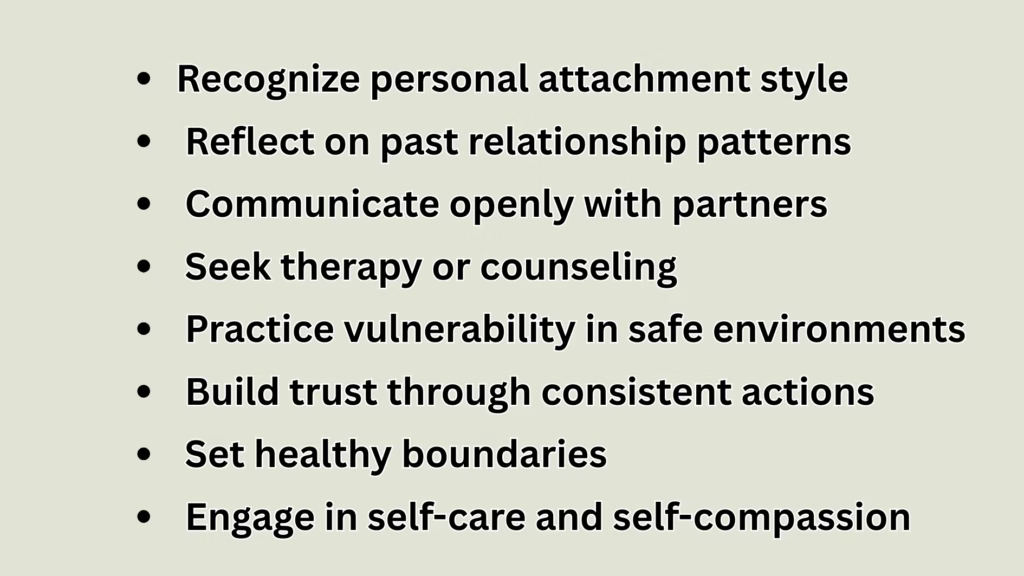Introduction
Attachment style avoidance is a relational pattern where individuals distance themselves emotionally to protect against perceived threats of intimacy. This behavior, often rooted in early life experiences, can significantly impact adult relationships, leading to challenges in forming deep connections. Recognizing and understanding this attachment style is crucial for fostering healthier, more fulfilling relationships.

Understanding Attachment Styles
The Four Primary Attachment Styles
-
Secure Attachment: Characterized by comfort with intimacy and autonomy.
-
Anxious Attachment: Marked by a deep desire for closeness and fear of abandonment.
-
Avoidant Attachment: Involves emotional distancing and a preference for independence.
-
Disorganized Attachment: A combination of anxious and avoidant behaviors, often resulting from trauma.
These styles develop in childhood based on caregiver interactions and influence adult relationship dynamics.
The Impact of Avoidant Attachment on Relationships
Emotional Distance and Intimacy Challenges
Individuals with an avoidant attachment style often struggle with emotional closeness, leading to:
-
Difficulty expressing feelings
-
Reluctance to depend on others
-
Challenges in maintaining long-term relationships
A study published in the International Journal of Indian Psychology found that both attachment anxiety and avoidance negatively correlate with relationship satisfaction .
Case Study: Craig’s Journey
Craig, a client with an avoidant attachment style, worked with therapist Dr. Ron to address his relational patterns. Through therapy, Craig learned to recognize his avoidance behaviors and gradually developed healthier ways to connect with others .
Strategies for Developing Secure Attachments
1. Self-Awareness and Reflection
-
Identify personal attachment patterns.
-
Reflect on past relationship behaviors.
2. Open Communication
-
Practice expressing emotions and needs.
-
Encourage honest dialogues with partners.
3. Seek Professional Support
-
Engage in therapy to explore underlying issues.
-
Consider couples counseling for mutual growth.
4. Build Trust Gradually
-
Allow relationships to develop over time.
-
Be patient with oneself and others.
Comparison of Attachment Styles
| Attachment Style | Characteristics | Relationship Impact |
|---|---|---|
| Secure | Comfortable with intimacy and autonomy | Healthy, stable relationships |
| Anxious | Craves closeness, fears abandonment | May appear clingy or overly dependent |
| Avoidant | Values independence, avoids closeness | Struggles with intimacy and commitment |
| Disorganized | Mix of anxious and avoidant behaviors | Unpredictable and often tumultuous relationships |
Checklist: Steps Toward Secure Attachment

Expert Insights
Relationship coach Jerica emphasizes the importance of understanding one’s attachment style to navigate dating and relationships effectively. She notes that avoidant individuals often learn early on to rely solely on themselves, leading to challenges in adult relationships .behereandnow.com+1ScholarWorks+1
Recent Research Findings
A study published in PsyPost found that individuals with higher levels of attachment avoidance are less likely to share personal events, particularly negative ones, with their partners. This selective sharing can hinder emotional intimacy and connection .PsyPost – Psychology News
FAQ’s : Attachment Style Avoidance
Q1.What causes avoidant attachment style?
Avoidant attachment often develops from early experiences where caregivers were emotionally unavailable or dismissive, leading individuals to suppress their need for closeness.
Q2.Can someone change their attachment style?
Yes, with self-awareness, therapy, and supportive relationships, individuals can shift toward a more secure attachment style over time.
Q3.How does avoidant attachment affect romantic relationships?
It can lead to difficulties in expressing emotions, reluctance to commit, and challenges in building deep connections.
Q4.Is avoidant attachment the same as being introverted?
No, introversion relates to energy preferences, while avoidant attachment pertains to emotional closeness and relationship behaviors.
Q5.Can two avoidant individuals have a successful relationship?
While challenging, with mutual effort and communication, two avoidant individuals can work toward a healthier dynamic.
Q6.How can partners support someone with avoidant attachment?
By being patient, encouraging open communication, and creating a safe space for vulnerability.
Q7.Are there specific therapies for avoidant attachment?
Yes, therapies like Emotionally Focused Therapy (EFT) and Cognitive Behavioral Therapy (CBT) can be effective.
Q8.Does avoidant attachment affect friendships?
Yes, it can lead to superficial connections and difficulty in forming deep, trusting friendships.
Q9.Can parenting style influence a child’s attachment?
Absolutely. Consistent, responsive caregiving fosters secure attachment, while neglect or inconsistency can lead to insecure styles.
Q10.Is avoidant attachment linked to mental health issues?
It can be associated with challenges like anxiety, depression, and difficulties in emotional regulation.
Conclusion
Understanding attachment style avoidance is a pivotal step toward cultivating healthier, more fulfilling relationships. By recognizing personal patterns, seeking support, and fostering open communication, individuals can move toward secure attachments and deeper connections.
Special Advice for Readers
If you identify with avoidant attachment patterns, remember that change is possible. Start by acknowledging your behaviors without judgment, seek professional guidance, and take gradual steps toward vulnerability. Building secure relationships is a journey, and every step counts.
Call to Action
Ready to explore your attachment style further? Take our free attachment style quiz and discover personalized strategies for building healthier relationships.
Useful Articles :-
- Signs of Love Bombing: 7 Red Flags to Spot Manipulative Affection Early
- What Is a Situationship? 7 Unfiltered Truths About Modern Love
- 10 Signs of a Healthy Relationship: What To Look For
- Communication Skills for Couples: 7 Transformative Tips to Strengthen Your Connection
- 7 Powerful Ways to Build Healthy Relationship Boundaries for Lasting Love
- 9 Empowering Steps for Recovering from a Breakup: Heal, Grow, and Thrive
- 7 Powerful Long-Distance Relationship Advice : Tips to Keep the Spark Alive
- Jealousy in Relationships: 7 Powerful Ways to Manage the Green-Eyed Monster
- 5 Insights Into Love Languages in Relationships : Do They Really Work?
- What Does Emotional Safety In Relationships? 7 Biblical Keys to Building Trust and Intimacy